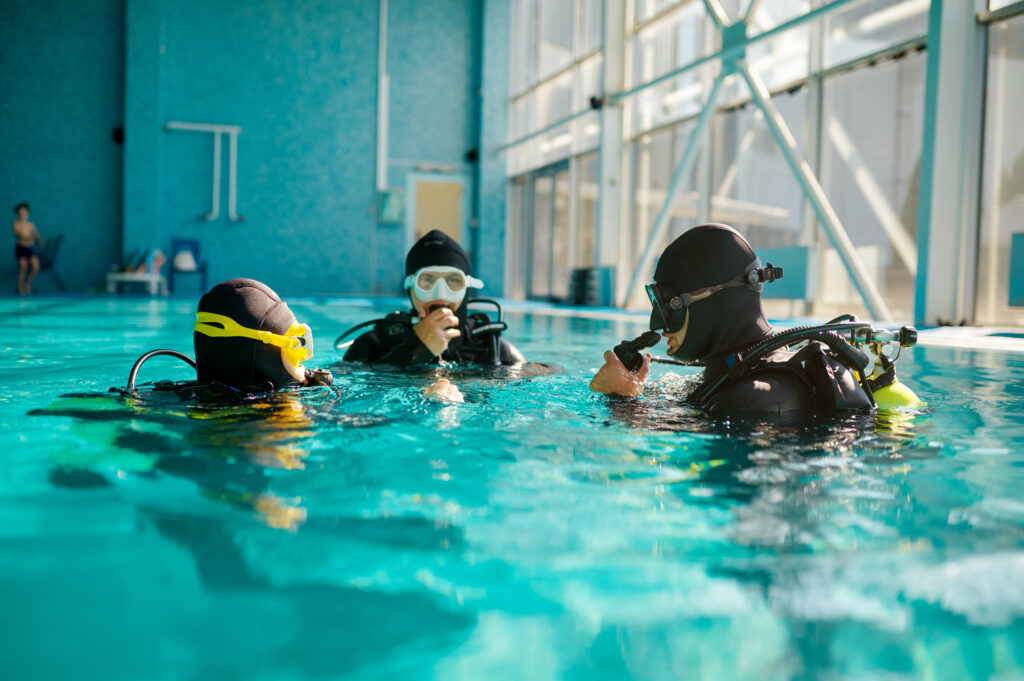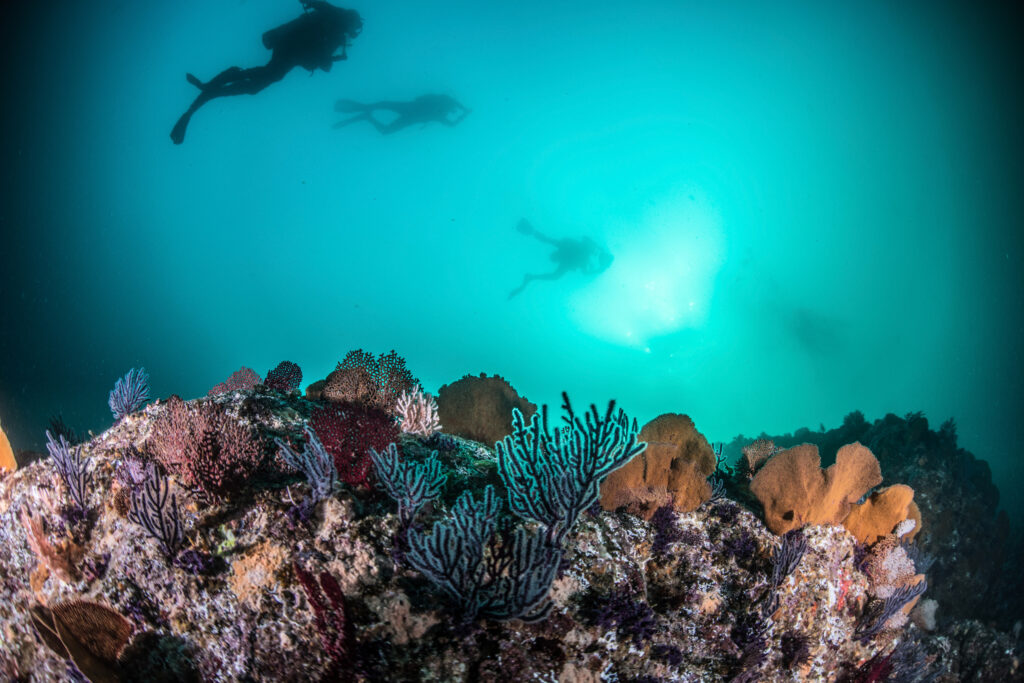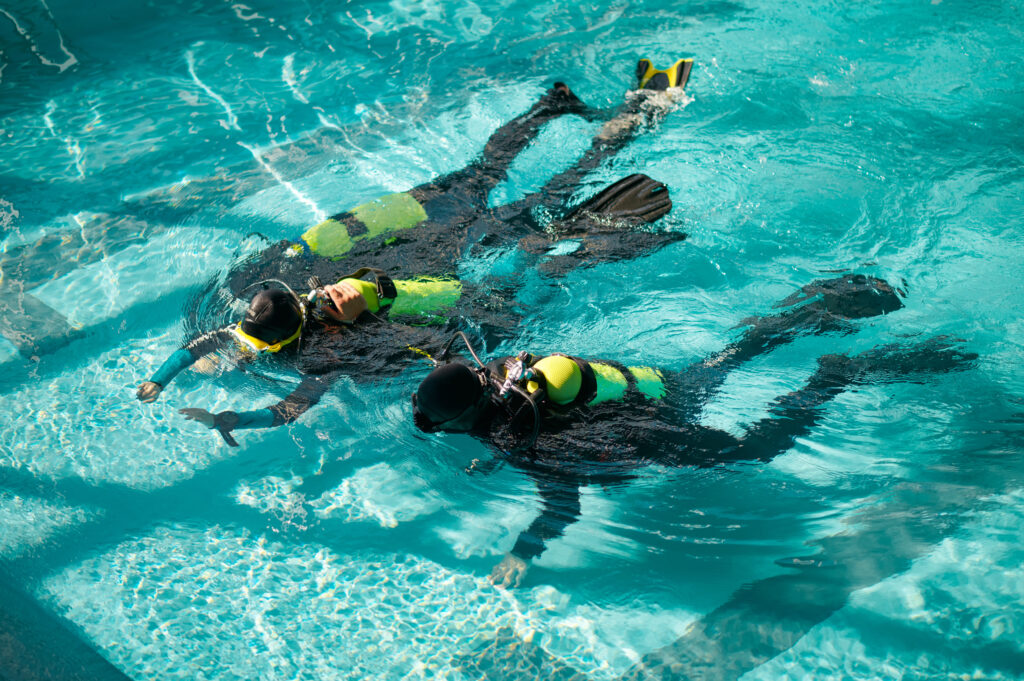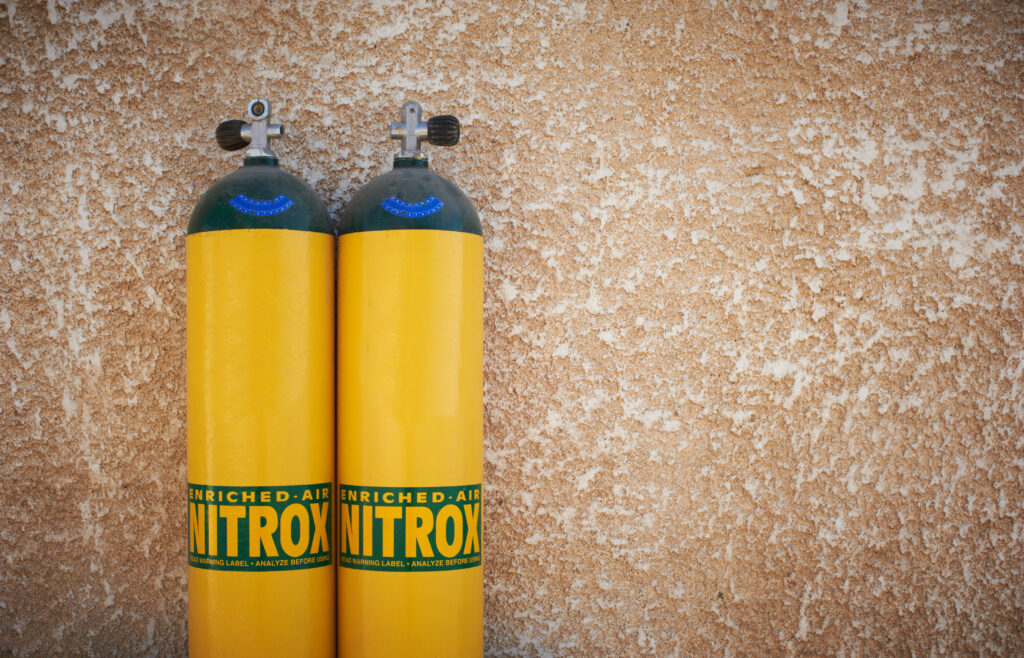What is a Safety Stop during Scuba Diving?

A safety stop is a voluntary pause during a diver’s ascent, usually lasting around 3 minutes and occurring at a depth of approximately 5 meters (15 feet).
What is really air when scuba diving?

Lorem ipsum dolor sit amet, consectetur adipiscing elit. Praesent vitae metus odio. Nam pellentesque turpis at vehicula vulputate. Etiam digsim consectetur nibh, nec suscipit quam interdum vitae.
What is a Gas Fraction?

In the context of scuba diving, a gas fraction refers to the proportion of each gas component within a breathing gas mixture. Understanding gas fractions is crucial for divers to ensure safe and efficient breathing under water. The significance of gas fractions cannot be overstated, as they directly influence dive planning, physiological effects on the body, and overall safety. By grasping the fundamentals of gas fractions, divers can make informed decisions that enhance their underwater experience while minimizing risks.
What is a Dive Table?

A dive table is a crucial tool in the practice of scuba diving, used to ensure divers can ascend safely without suffering from decompression sickness. These tables provide guidelines for how long a diver can stay underwater at various depths and the necessary surface intervals to avoid decompression sickness, also known as “the bends.” Dive tables are essential for maintaining diver safety, as they help manage the body’s intake and release of inert gases, such as nitrogen, which dissolve into the body tissues under pressure. By following dive table guidelines, divers can plan their dives to stay within safe limits, reducing the risk of injury from decompression.
What is a Patent Foramen Ovale?

A Patent Foramen Ovale (PFO) is a small, flap-like opening between the right and left atria of the heart that fails to close naturally after birth. During fetal development, this opening is essential for allowing oxygen-rich blood from the mother to bypass the non-functioning fetal lungs. Normally, the foramen ovale closes shortly after birth as the baby’s lungs take over oxygenation. However, in about 25-30% of the population, this opening remains partially or completely open, resulting in a PFO. This condition is usually benign and asymptomatic, meaning most people with a PFO are unaware of its presence. However, in certain situations, such as during scuba diving, the existence of a PFO can have significant implications, making it a topic of interest for divers and medical professionals alike.
What is a Dive Profile?

What is a Dive Profile? A dive profile is a detailed plan that outlines the depth and duration of a scuba dive, including the rates of descent and ascent, and any necessary decompression stops. It is a crucial element in scuba diving that ensures safety by managing the diver’s exposure to pressure changes and the […]
What is a Liveaboard?

A liveaboard is a vessel designed or adapted for extended voyages, providing accommodations for divers who wish to stay on board for several days or weeks. This setup allows enthusiasts to access remote diving sites, experience multiple dives each day, and immerse themselves in the underwater environment without the need to return to shore frequently. Liveaboards have become increasingly popular among divers for their convenience and the enriched diving experience they offer.
What is Nitrox in Scuba Diving?

What is Nitrox in Scuba Diving? Nitrox, or Enriched Air Nitrox (EANx) or simply EAN, is a breathing gas mixture consisting of nitrogen and oxygen in which the proportion of nitrogen is less than the naturally occurring 78% found in atmospheric air. The primary benefit of using nitrox in scuba diving is reduced nitrogen absorption, […]
What is Oxygen?

Oxygen is a fundamental element essential for the survival of almost all living organisms. In the context of scuba diving, understanding oxygen’s properties and its role is crucial for both safety and performance. This article delves into the various aspects of oxygen, from its basic chemistry to its physiological effects on divers, and the technologies used to manage it underwater. As one of the critical components in breathing gas mixtures, oxygen’s management and the equipment designed for its delivery are vital for successful and safe scuba diving experiences.
What is Pressure?

Pressure is a fundamental concept in physics, defined as the force exerted per unit area. In the context of scuba diving, understanding pressure and its effects is crucial for safety and efficiency. Pressure plays a pivotal role in determining how divers experience the underwater environment, affecting everything from breathing to buoyancy. As divers descend into the water, the pressure increases, impacting both their equipment and bodies in significant ways. This article will discuss the principles of pressure, its effects on the human body, the health risks associated with changes in pressure, techniques for managing these changes, and the equipment designed to withstand them.
